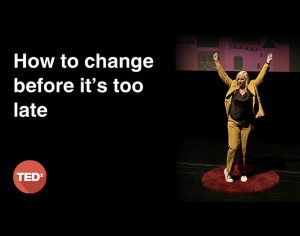An inclusive workplace starts at the top. Women and minorities are severely under-represented within business leadership. It is up to leaders, across sectors to look around the boardroom and examine where diversity is on the business agenda, and why. From this point you can outline solutions, from education initiatives to employee forums. The problem is no longer about raising awareness, it is about instigating action.
Definitive action from the leadership team will feed through to your entire workforce, open doors to a wider talent pool and enable you to reflect the diverse needs of your target customer.
Start at the top
Championing allyship and diversity in leadership sets a tone from the top that the organisation is committed to inclusivity. A common concern about the conscious shift to putting women in leadership is that it leads to exclusion of men. This is the great paradox of inclusion ‘ that inclusion must also involve exclusion, but that definitely should not be the case. In fact, the key practice of allyship means that all social groups should feel supported by their peers, and those who hold more leadership capital advocate for their peers in minority groups. If necessary, you may look to arrange coaching sessions for leaders who are unfamiliar, and perhaps nervous about allyship.
The attitudes of business leaders can largely dictate those of employees while they are at work. A leader who openly strives to build an inclusive workplace and include staff from all social groups will, in turn, inspire staff at all levels to do the same. This is also an opportunity to open a crucial dialogue with staff, to understand their own views and experiences of workplace diversity which can inform future strategy.
Be an attractive employer
Finding the right talent can be a real issue for businesses, but the good news is that diversity breeds diversity and widens the talent pool. According to research by PwC, 85% of female millennials look for employers with a strong record of diversity. It is important to hire people from all backgrounds to build a breadth of skills across your team, widening your business’ perspective when it comes to problem solving, innovation and developing new ideas. Organisations that are not diverse risk losing skilled talent to companies who have a more inclusive culture.
Reflect your customer
Diversity in leadership gives businesses an advantage with prospective customers. For most businesses, customers come from all walks of life, the more voices, and backgrounds you have among your workforce, the more accurately you can predict the wants and needs of your customers. Having diverse minds in the room, with varied outlooks and experiences, creates a melting pot of ideas that can reflect your customer. A business that recycles the same ideas without factoring in the diversity of its customer base will realise that you can not apply the same approach to everyone.
To use the retail sector as an example, it was recently revealed that there are no female retail executives in left in the FTSE. Retail is a sector that is already in a state of flux as it struggles to adapt to customer expectations. By nature of its offering, the retail customer pool is incredibly diverse, but it’s also dominated by women, with 80% of purchasing decisions made by women. How can a sector that is run almost exclusively by men, accurately understand the experience of women and what fuels their buying decisions? In addition to this, a significant proportion of retail staff are female and they have been disproportionately affected by job losses and furlough brought by the COVID pandemic. It is the lived experiences of diverse leaders that can accurately understand those of their diverse customer and staff base, for an already worrying time for many businesses, it is time to understand how representation matters.
“
Share via:


















































